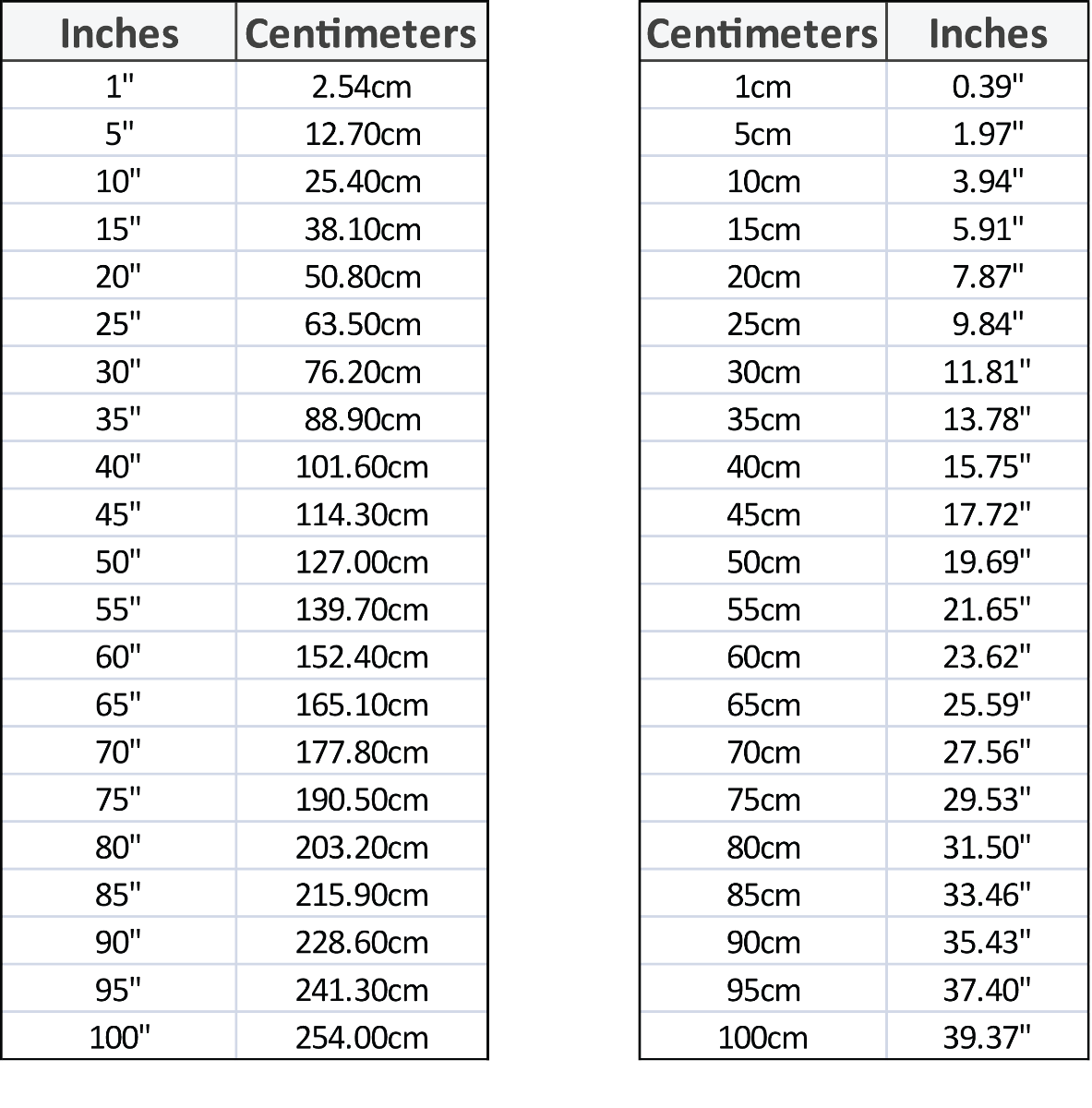Have you ever been trying to visualize the size of something and stumbled upon measurements in centimeters? Maybe you’re trying to buy a piece of furniture online, but the dimensions are listed in centimeters, and you’re not sure how that translates to inches. Or perhaps you’re trying to follow a pattern for a craft project, and the instructions are in centimeters, but your measuring tape is marked in inches. Fear not, because in this ultimate guide, we’ll delve into the world of centimeters and inches, exploring how they relate to each other and uncovering the secrets of converting between these two common units of measurement.

Image: www.pinterest.co.uk
Whether you’re a seasoned DIY enthusiast or simply trying to understand the world around you, understanding how to convert between centimeters and inches can be an incredibly useful skill. We’ll break down the conversion process step by step, making it easy for anyone to grasp. Join us on this journey of measurement exploration and unlock the power of understanding both centimeters and inches.
Unveiling the World of Centimeters and Inches: What You Need to Know
Before we dive into the conversion process, let’s get familiar with centimeters and inches:
-
Centimeters (cm): Often considered the standard unit of length within the metric system, centimeters are part of a decimal system, meaning they easily convert into other measurement units like millimeters (mm) and meters (m). The term “centimeter” comes from the Latin words “centum” (meaning “one hundred”) and “metrum” (meaning “measure”). This hints at the fact that one centimeter is equal to one hundredth of a meter.
- The History of the Centimeter: The metric system was developed in France during the French Revolution. It was intended to be a simple and logical system of measurement, replacing the often confusing and inconsistent units of measure that existed at the time. The centimeter became an integral part of this new system, and its adoption spread globally throughout the 19th and 20th centuries.
-
Inches (in): Belonging to the imperial system of measurement, inches are commonly used in the United States and a few other countries. The word “inch” comes from the Old English word “ynce,” which meant “a twelfth part.” This reflects the historical definition of an inch as one-twelfth of a foot.
- The History of the Inch: The inch has a rich history dating back to ancient civilizations. Early civilizations used various measures, often based on body parts like the length of a finger or the span of a hand. The inch eventually standardized into its current form during the Middle Ages, becoming a foundational unit of measurement within the imperial system.
The Magic Number: How Many Inches Are in 150 cm?
Now, let’s get to the heart of the matter. How many inches are in 150 cm? The answer is 59.0551 inches.
But how did we arrive at this number? It all comes down to the conversion factor between centimeters and inches. There are 2.54 centimeters in every 1 inch. Armed with this crucial piece of information, we can perform the necessary calculation:
- 150 cm / 2.54 cm/inch = 59.0551 inches
Understanding the Conversion Process: A Step-by-Step Guide
Let’s break down the process of converting centimeters to inches into a simple, digestible format:
-
Identify the value in centimeters. In this case, our starting value is 150 cm.
-
Find the conversion factor. Remember that there are 2.54 centimeters in every 1 inch.
-
Divide the value in centimeters by the conversion factor. This will yield the equivalent value in inches.
- Example: 150 cm / 2.54 cm/inch = 59.0551 inches

Image: www.myxxgirl.com
Real-World Applications: Seeing the Power of Conversion
The ability to convert between centimeters and inches is not just a valuable skill for math class; it can be incredibly useful in various real-world situations. Here are a few examples:
-
Shopping Online: Imagine you’re trying to buy a new sofa from an online retailer based in a country using the metric system. The dimensions might be listed in centimeters. By converting those measurements to inches, you can easily determine if the sofa will fit comfortably in your living room.
-
DIY Projects: You’re embarking on a woodworking project using plans downloaded from the internet. The plans use centimeters, but your measuring tape is calibrated in inches. Being able to convert between the two units allows you to accurately measure the wood, ensuring that your project comes out perfectly.
-
Understanding International Products: As we become increasingly globalized, we encounter products from all corners of the world. Being able to convert measurements, including those in centimeters, allows us to better understand the size and dimensions of these products.
Expert Insights: Tips for Success
-
Round Up or Down?: When working with measurements in the real world, it’s often necessary to round up or down to the nearest inch or centimeter. Determining whether to round up or down depends on the specific application and the level of precision required. If you’re ordering a piece of fabric, it’s best to round up to ensure that you have enough material.
-
Online Conversion Tools: Several online tools are available to make converting between centimeters and inches effortless. These tools allow you to input a value in centimeters and instantly receive its equivalent value in inches.
How Many Inches Is 150 Cm
Conclusion
Converting between centimeters and inches is a skill that can enhance your understanding of the world around you and empower you to navigate a variety of situations with confidence. By mastering this conversion, you unlock the ability to easily compare sizes in both the metric and imperial systems, making shopping, DIY projects, and even international communication a breeze.
So, the next time you encounter measurements in centimeters, don’t fret! You now have the knowledge and tools to confidently convert those measurements into inches and make informed decisions. Share your experience with converting between centimeters and inches and help others learn by sharing this guide!





